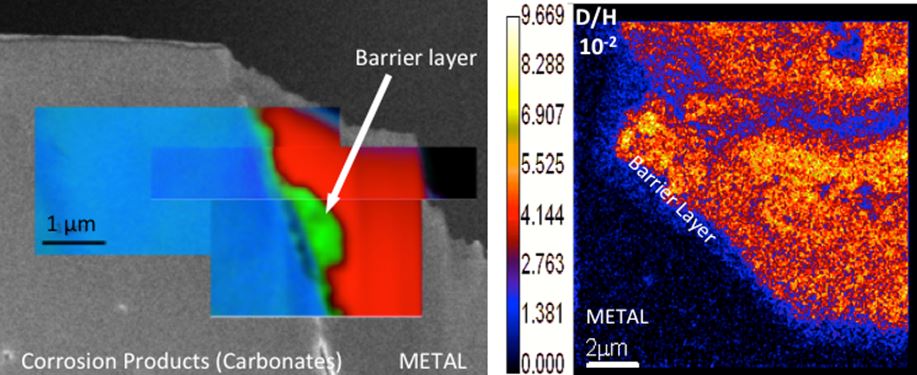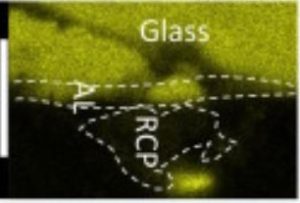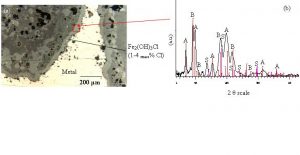Plusieurs pays envisagent de développer une technologie de barrières multiples pour la sécurité du stockage des déchets nucléaires. Une question centrale est de savoir modéliser le comportement sur le long terme (soit 100 à 1000 ans) des matériaux utilisés, en particulier des containers, en acier faiblement allié, et de la matrice vitrifiée.
Dans ce cadre général, le NIMBE/LAPA cherche à mettre en évidence les mécanismes de corrosion à long terme de systèmes contenant des alliages ferreux et du verre dans les divers milieux envisagés pour le stockage profond ou les stockages provisoires (atmosphère, béton et liants hydrauliques).
La méthode est basée sur l'étude d'analogues archéologiques provenant de sites de référence sur lesquels il est possible de mesurer les paramètres environnementaux et de disposer d'un nombre d'objets suffisants pour une étude en laboratoire. Ceux-ci sont ensuite étudiés à différentes échelles de l'échelle macroscopique à celle du nanomètre. L'étude d'échantillons altérés dans des conditions contrôlées en laboratoire complète l'approche.
Several countries envisage to develop a multibarrier concept for the safe storage of nuclear wastes. The main issue is to manage to predict on the long term (i.e. 100 to 1000 years) the behaviour of the materials and especially of the low alloy steel overcontainer and its vitrified matrix, by modelling.
In that general framework, LAPA is interested to evidence long-term corrosion mechanisms of systems containing ferrous alloys and glass in various media concerned by deep storage (anoxic carbonated water) or interim storage (atmosphere, concrete and hydraulic binders).
The methodology is based on the study of archaeological analogues coming from reference sites on which it is possible to measure the environmental parameters and to sample a significant number of artefact that can be later studied in laboratory. The system is then investigated at different scales from macro to nanometer. Studying short-term altered samples in controlled conditions in the laboratory completes the approach.









